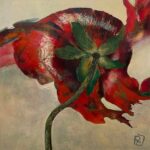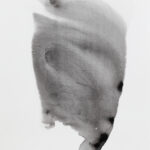Albert van Gulik – “The Artist Who Walked By Himself” *
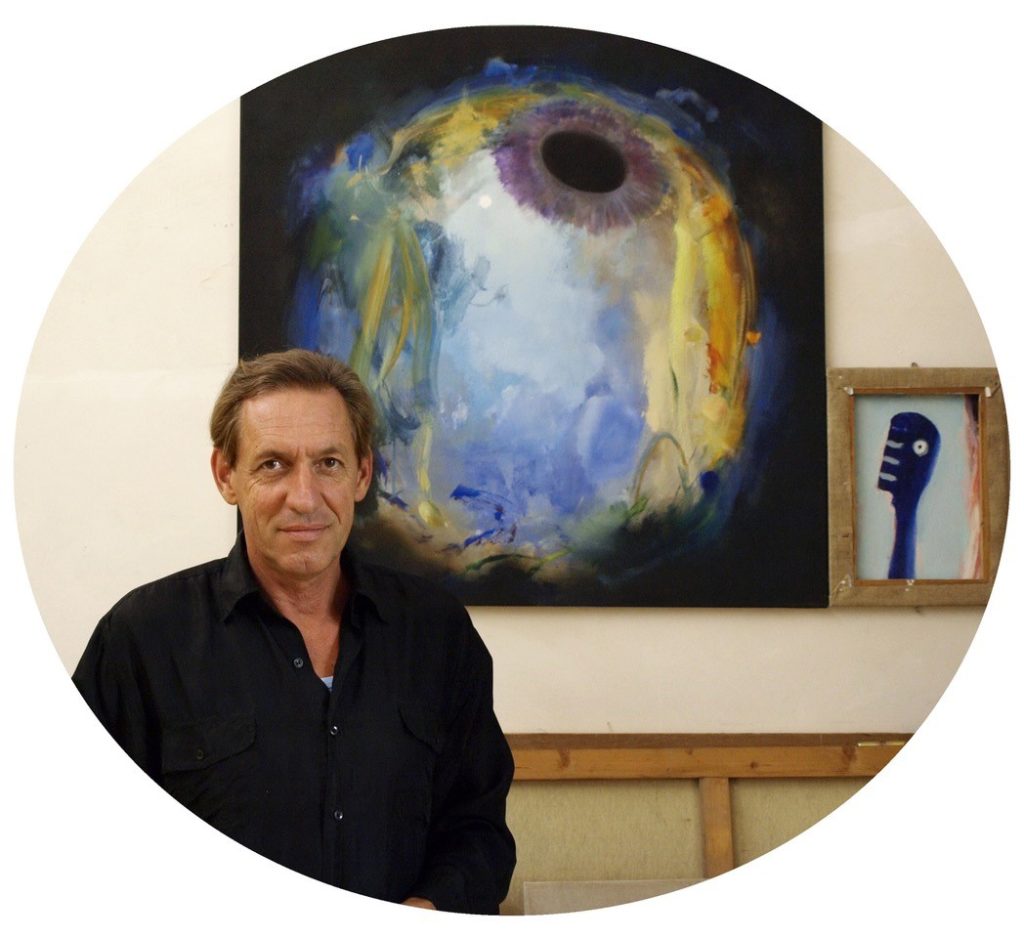
THE VILLAGE OF CHAROLS
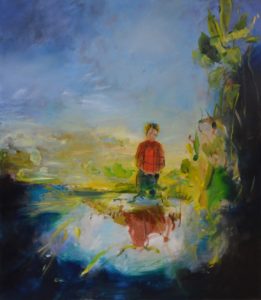 Charols is situated 18 km to the east of Montélimar. Its population numbers about 8OO souls many of whom live in development areas that have recently been built on the outskirts. However, the older parts of the Vieux Village are well preserved and go back to medieval times with stone houses that line up in a maze of narrow intersecting streets. Right in the centre on a little square the Eglise Saint-Jean Baptiste that was built in the 11th century is a fine example of Romanesque art well worth a visit.
Charols is situated 18 km to the east of Montélimar. Its population numbers about 8OO souls many of whom live in development areas that have recently been built on the outskirts. However, the older parts of the Vieux Village are well preserved and go back to medieval times with stone houses that line up in a maze of narrow intersecting streets. Right in the centre on a little square the Eglise Saint-Jean Baptiste that was built in the 11th century is a fine example of Romanesque art well worth a visit.
Since time immemorial Charols has been a thoroughfare on the route linking north and south and today during the season it still is an extremely busy alternative road taken by holiday makers who wish to avoid the heavy traffic on the main A7 highway that runs down the Rhône Valley. On the roundabout -as one crosses the village- it is difficult not to notice the massive wooden coach house door fronting a large stone building. In the past it used to be an inn and a stopover place for stage coaches along with stables in the courtyard for the horses and facilities for travellers. Today the owner of the building is a Dutchman. He is also an artist, and how he came to live here and what he paints is the subject of this month’s Blog.
*Reference to Kipling’s story “The Cat that Walked by Himself”
ALBERT VAN GULIK
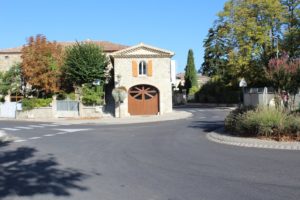 Albert van Gulik’s story is that of a painter who went around the world in search of quiet and inspiration and finally found what he was looking for in la Drôme. Like many artists before him he had reached a turning point in his life when he felt the time had come to spread his wings to explore new horizons and broaden his perspectives. Having graduated from art school, he established himself as an independent artist in the city of s’Hertogenbosch in the Netherlands. For art lovers it might be interesting to note that the great XVth century painter Hieronymous Bosch who painted so many stunning – and not very reassuring – masterpieces such as the famous triptych The Garden of Earthly Delights, The Last Judgement, The Haywain or The Wayfarer, etc. had also lived here. After 30 years during which Albert developed various activities related to art, exhibiting in Holland but also abroad in Singapore, Bangkok, Malaysia and Nigeria and even running his own gallery he began to feel that his creative powers risked running out. The cultural climate in Holland had become too cramped and the damp climate prevented him from experiencing the physical connectedness with his surroundings he deemed essential for his art. So, accompanied by his wife Anne, they decided on an exploratory tour beyond the frontiers of their homeland with a view to finding a more propitious spot to develop his art.
Albert van Gulik’s story is that of a painter who went around the world in search of quiet and inspiration and finally found what he was looking for in la Drôme. Like many artists before him he had reached a turning point in his life when he felt the time had come to spread his wings to explore new horizons and broaden his perspectives. Having graduated from art school, he established himself as an independent artist in the city of s’Hertogenbosch in the Netherlands. For art lovers it might be interesting to note that the great XVth century painter Hieronymous Bosch who painted so many stunning – and not very reassuring – masterpieces such as the famous triptych The Garden of Earthly Delights, The Last Judgement, The Haywain or The Wayfarer, etc. had also lived here. After 30 years during which Albert developed various activities related to art, exhibiting in Holland but also abroad in Singapore, Bangkok, Malaysia and Nigeria and even running his own gallery he began to feel that his creative powers risked running out. The cultural climate in Holland had become too cramped and the damp climate prevented him from experiencing the physical connectedness with his surroundings he deemed essential for his art. So, accompanied by his wife Anne, they decided on an exploratory tour beyond the frontiers of their homeland with a view to finding a more propitious spot to develop his art.
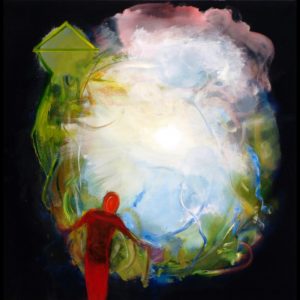 The point of departure happened to be Dieulefit in the Drôme, where they were staying with friends, and it was to Dieulefit they returned after having traveled east to Singapore, Malaysia and then on down to New Zealand. It was admittedly a long detour for Albert to finally conclude that the Drôme met all his requirements. The region was appealing with its beautiful landscapes and sunny climate. There were ever present vestiges of a long and chequered past and he felt that the right kind of cultural climate prevailed. The couple visited a number of possible locations in the surroundings of Dieulefit where they could settle and finally fell for the ruins of the ancient coaching inn with its collapsing roof, rotting woodwork, unhinged windows, at the entrance of Charols. Although the task was formidable for a man who contemplated restoring the whole place practically on his own, Albert decided to buy it.
The point of departure happened to be Dieulefit in the Drôme, where they were staying with friends, and it was to Dieulefit they returned after having traveled east to Singapore, Malaysia and then on down to New Zealand. It was admittedly a long detour for Albert to finally conclude that the Drôme met all his requirements. The region was appealing with its beautiful landscapes and sunny climate. There were ever present vestiges of a long and chequered past and he felt that the right kind of cultural climate prevailed. The couple visited a number of possible locations in the surroundings of Dieulefit where they could settle and finally fell for the ruins of the ancient coaching inn with its collapsing roof, rotting woodwork, unhinged windows, at the entrance of Charols. Although the task was formidable for a man who contemplated restoring the whole place practically on his own, Albert decided to buy it.
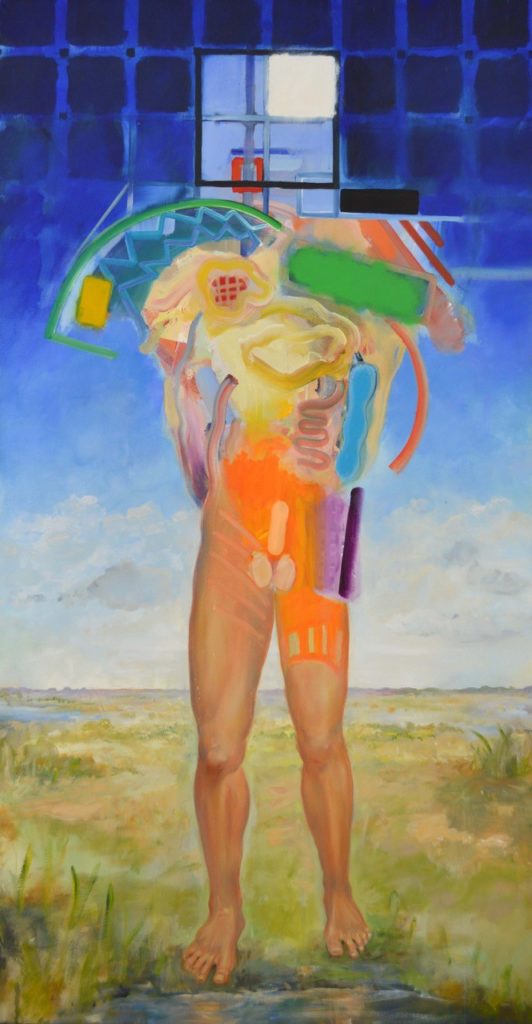 Le fou hollandais was how the villagers first dubbed him as he carted materials around, hammered and sawed away, and used pulleys to hoist rafters singlehandedly to sustain the crumbling roof. However, being an outgoing and friendly man, he made contacts and although he hardly spoke a word of French, it was just enough to greet people and get along with his business. He also made a point of attending village events, went for a drink at the local café and more importantly perhaps he joined the local jeu de boules club where he earned the reputation of being un bon tireur, a technique which consists in aiming at the opponent’s boules with one’s own boule and knocking them away. The restoration work took Albert seven long years, which can rightly be considered a feat of dogged endurance to satisfy a dream. When it was completed the old inn boasted roomy comfortable living quarters, a large studio and a private gallery in one of the wings that can be visited today and easily competes with the best commercial ones in a major city.
Le fou hollandais was how the villagers first dubbed him as he carted materials around, hammered and sawed away, and used pulleys to hoist rafters singlehandedly to sustain the crumbling roof. However, being an outgoing and friendly man, he made contacts and although he hardly spoke a word of French, it was just enough to greet people and get along with his business. He also made a point of attending village events, went for a drink at the local café and more importantly perhaps he joined the local jeu de boules club where he earned the reputation of being un bon tireur, a technique which consists in aiming at the opponent’s boules with one’s own boule and knocking them away. The restoration work took Albert seven long years, which can rightly be considered a feat of dogged endurance to satisfy a dream. When it was completed the old inn boasted roomy comfortable living quarters, a large studio and a private gallery in one of the wings that can be visited today and easily competes with the best commercial ones in a major city.
Ever since he arrived in Charols some 15 years ago Albert spends up to seven or eight months every year in this haven of art, making and exhibiting his paintings. The rest of the time he goes back to his home in ‘s Herthogenbosch. Visitors are welcome, and he is always open to a discussion on to how and why he makes his art.
I interviewed Albert in his spacious studio. The sun came streaming in through two high windows and we sat facing the easel on which there was a large unfinished semi abstract composition. In the gallery next to the studio he had set up a display of the project he is currently working on: the pages of a book reviewing paintings made during a lifetime dedicated to art along with corresponding thoughts. Having tacked them to the walls they gave him a general overview of the lay-out that if necessary could be rearranged. 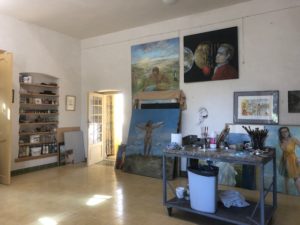
Multimedia presentation “The Inner World of the Body – Part 1”
Multimedia presentation “The Inner World of the Body – Part 2”
I consequently began by asking Albert why he painted? He looked at me with a surprised expression. “I don’t quite follow what you mean by your question and what do you expect me to say?”
Why did you become a painter?
“Are you serious, in order to paint of course”…
The conversation seemed to have got off to a bad start. Fortunately, Albert felt the need to explain his answer:
“People and especially intellectuals are so used to rational answers that they think that this applies to art whereas reason cannot explain its significance. And, thank Heavens for that!”
Are you trying to tell me that art cannot be discussed? Isn’t that an easy way out? You’ll agree with me that it is normal to want to understand a painting.
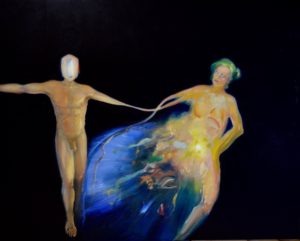 In order to understand what a painting is, words get in the way for they describe something that the artist is trying to convey in a pictorial manner. Painting is not the same as writing which is a means of communicating by way of a conventional and limited code. To imagine that words can be used to interpret a painting is perhaps because it is made up of lines, forms and colours that can all be named. However, painting like music serves to express emotion and emotions fall under another category of experience.
In order to understand what a painting is, words get in the way for they describe something that the artist is trying to convey in a pictorial manner. Painting is not the same as writing which is a means of communicating by way of a conventional and limited code. To imagine that words can be used to interpret a painting is perhaps because it is made up of lines, forms and colours that can all be named. However, painting like music serves to express emotion and emotions fall under another category of experience.
Why did you leave your home town in Holland for the French countryside?
To be free. To be free of the dictates of the contemporary art scene that have turned art into a money-making product by artists who follow the latest trends and are judged by the sales they generate. Have you noticed how works that seemed novel a decade ago start looking old fashioned when you look at them now? It doesn’t necessarily mean that they are bad paintings but rather that they have been subjected to the trends and moods of the day and therefore lack a certain degree of authenticity. I have my own gallery. I am independent and in this way there is less chance of losing my integrity as an artist. I also believe that art and isolation interact very well. 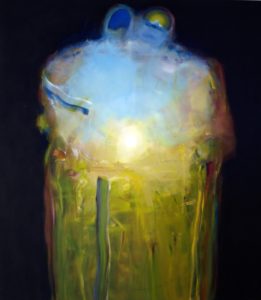
Some artists paint landscapes – by the way you are good at it – others are portraitists, others again are abstract painters. Your paintings contain many of these elements, but you can’t be classed in any specific category as an artist. I have tried but I find it difficult to say what kind of painter you are except that you are your own sort. You yourself qualify your exhibitions as thematic. Could you perhaps elucidate what you imply by thematic?
I have given a lot of thought to what it means to be a human being, where he or she stands in the universe, how we interact, what brings us together and what divides us, the relationship between man and woman. My paintings touch on all these matters and somehow as I proceed and when I look at them once they are finished they provide me with a kind of insight that is difficult to describe with words. So I keep on painting, all the while hoping to extend my understanding of the human condition.
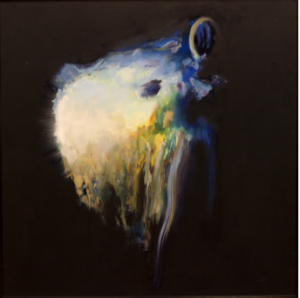 Having given his answer, Albert invited me to come into the gallery where the pages containing reproductions of his works with accompanying texts for the book he is preparing cover a 30 metre long wall. It was a revealing sight. I looked closer at the pictures, I read some of the texts and suddenly realised that to really appreciate Albert’s painting it was not enough to take one work at a time. They should be seen as a whole and as a persistent visual quest to get to the bottom of universal truths touching upon birth and death, the pressures of society and religion versus deeper individual desires, the corrupting influence of money, vogue and trendiness. And, how they affected him personally. In some paintings the viewer is confronted by an art of brutal fact and tragic despair whereas others depict the romantic yearning to reach an unreachable truth. That being the fate of humankind Albert will go on painting and perhaps each time he will get a little bit closer to an answer!
Having given his answer, Albert invited me to come into the gallery where the pages containing reproductions of his works with accompanying texts for the book he is preparing cover a 30 metre long wall. It was a revealing sight. I looked closer at the pictures, I read some of the texts and suddenly realised that to really appreciate Albert’s painting it was not enough to take one work at a time. They should be seen as a whole and as a persistent visual quest to get to the bottom of universal truths touching upon birth and death, the pressures of society and religion versus deeper individual desires, the corrupting influence of money, vogue and trendiness. And, how they affected him personally. In some paintings the viewer is confronted by an art of brutal fact and tragic despair whereas others depict the romantic yearning to reach an unreachable truth. That being the fate of humankind Albert will go on painting and perhaps each time he will get a little bit closer to an answer!
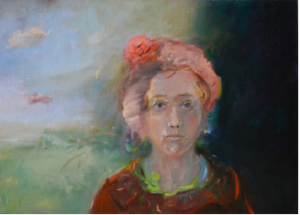
Posted in: Art
